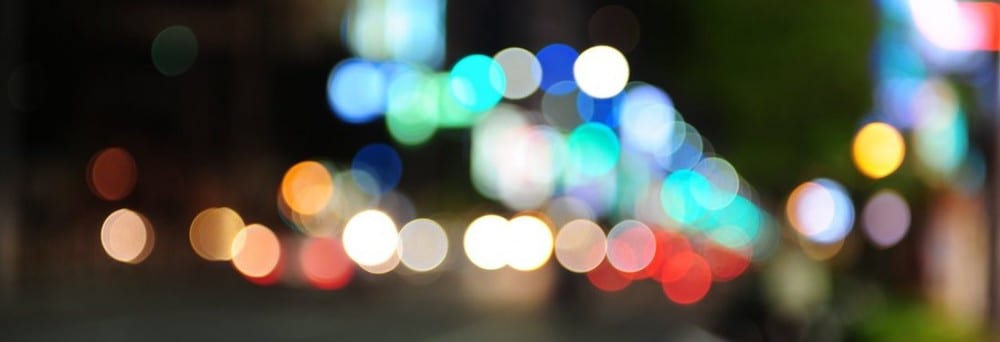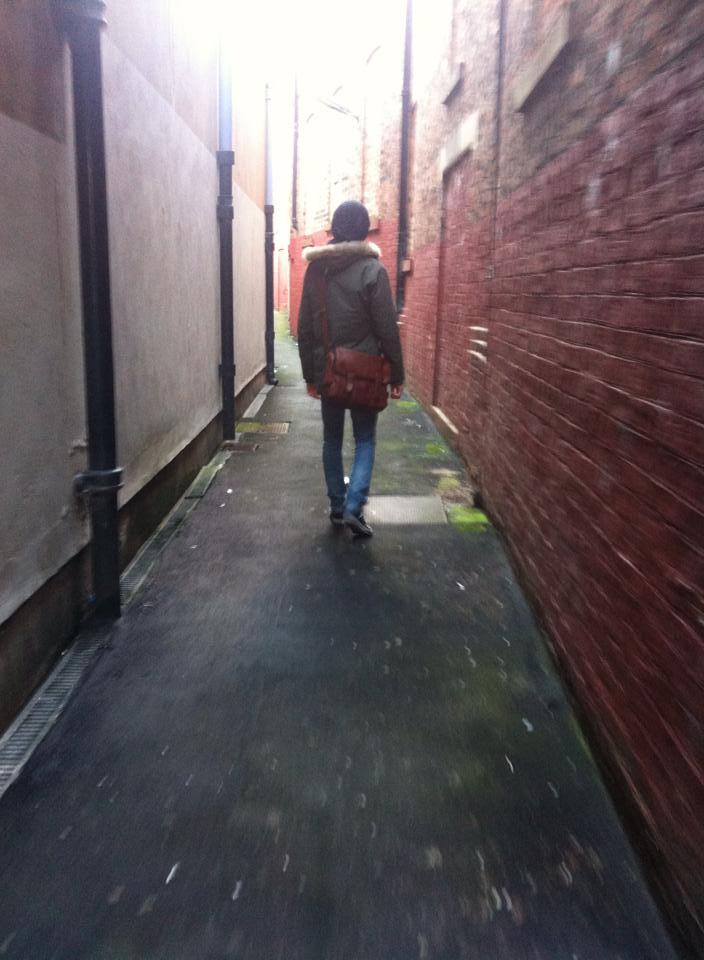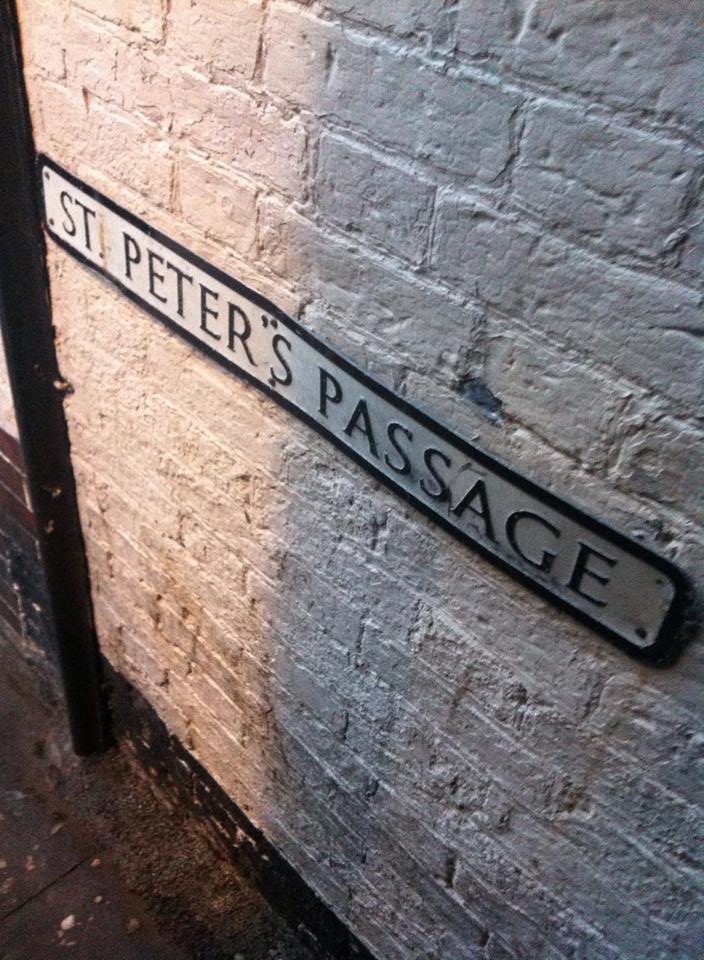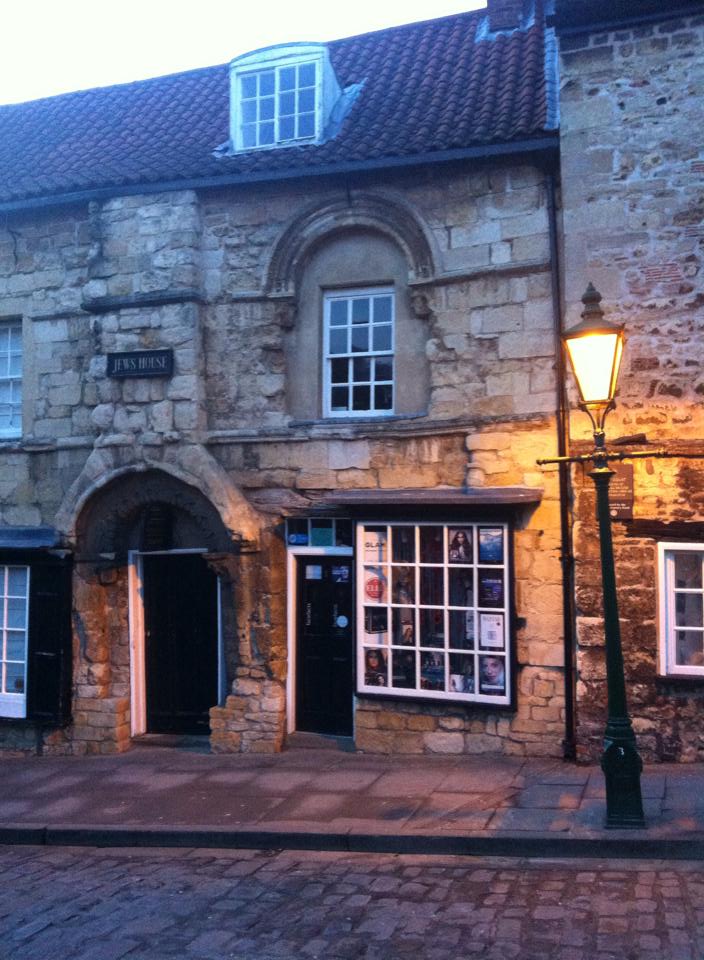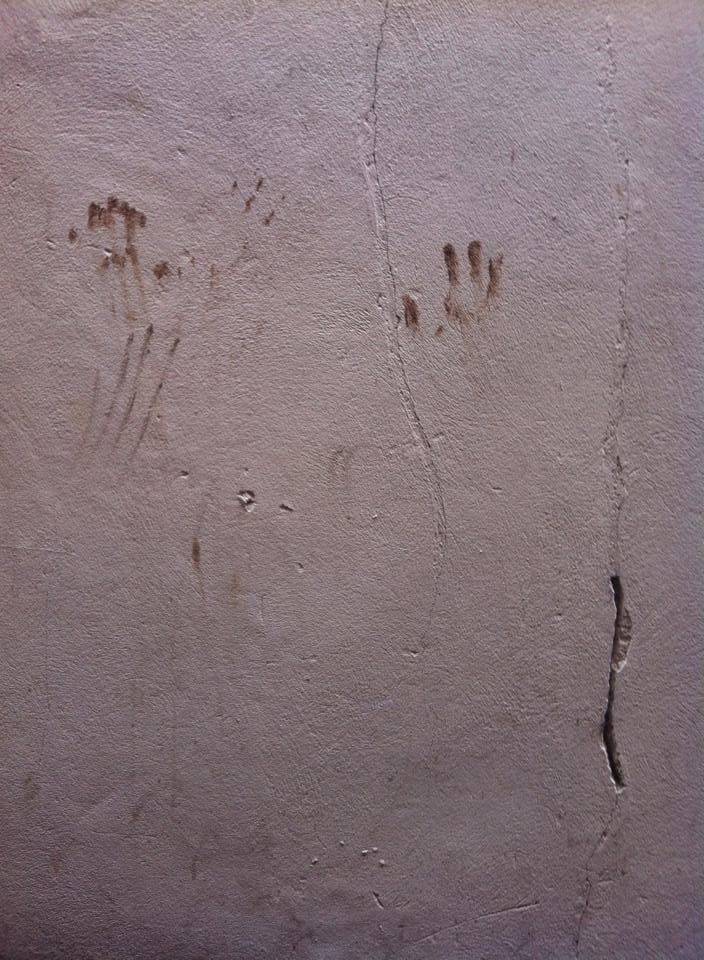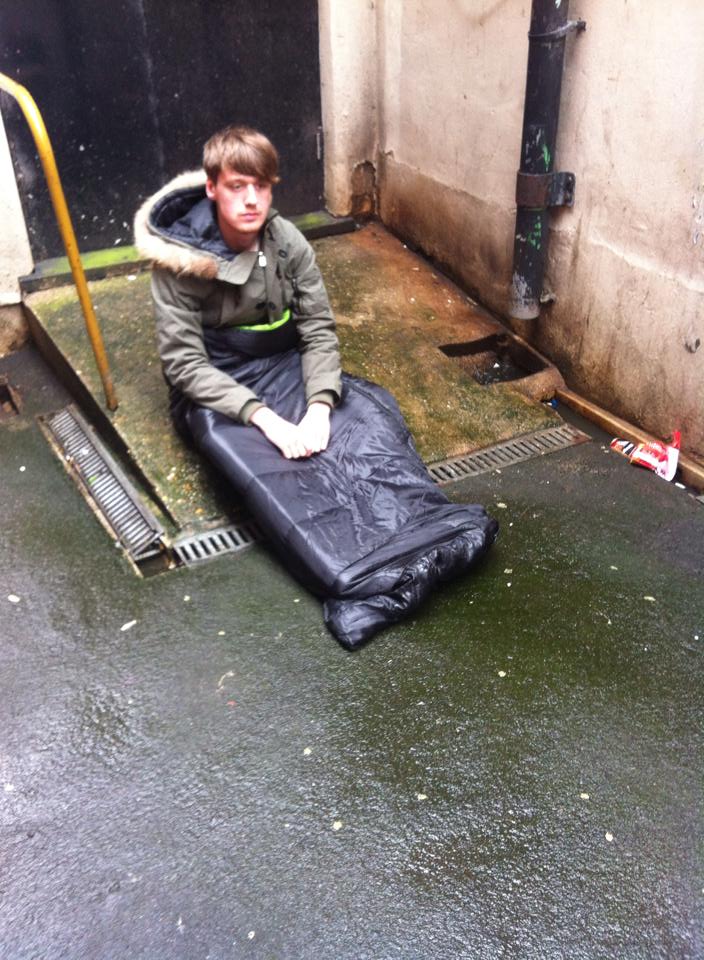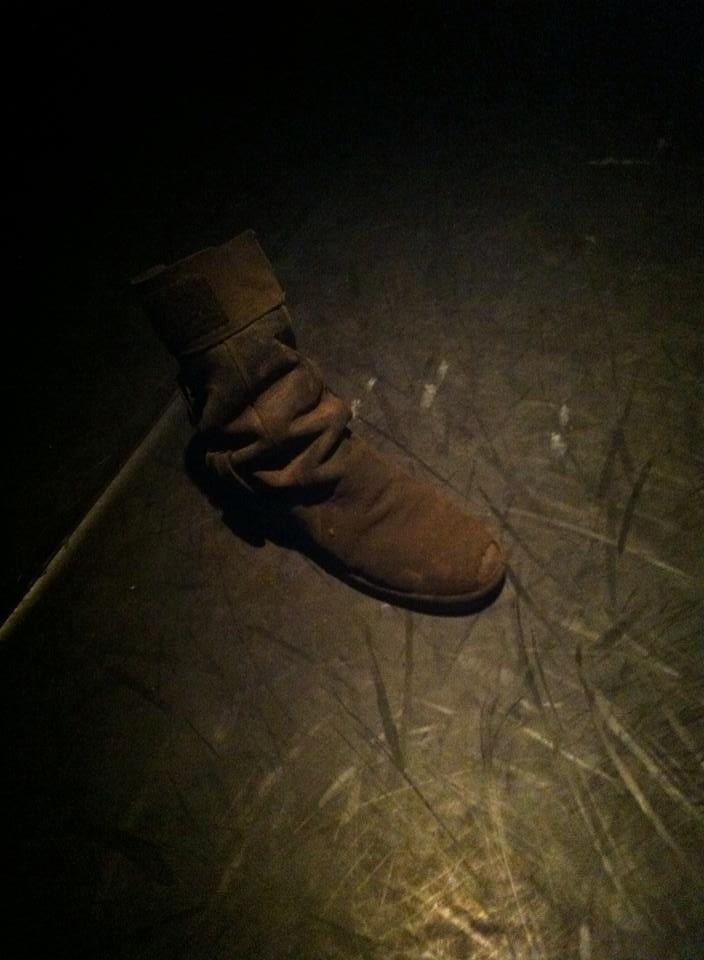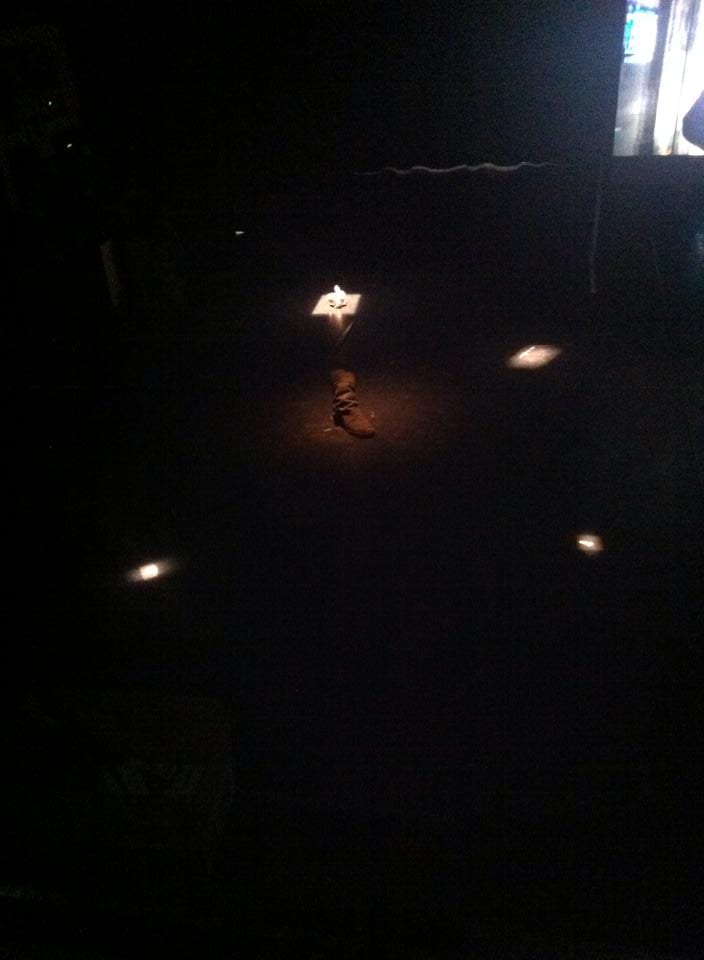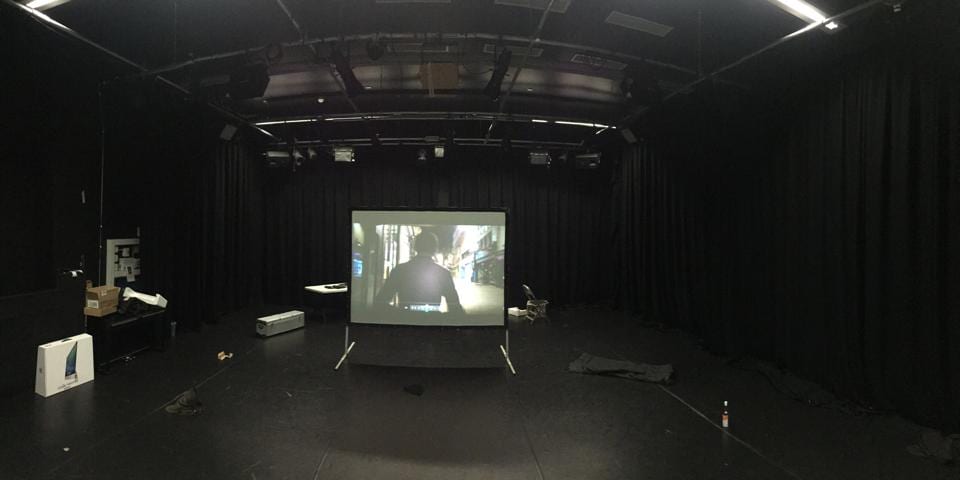Passages
A beginning passage
‘Passages’ was a site-specific performance performed on the 9th of April 2015 within Studio 1 of the LPAC .The piece concerned itself with St Peters Passage, an alleyway just off the high street in Lincoln. While not performed directly at the site, mainly due to health and safety, the performance authentically brought St Peters Passage to life within the studio through additional means. The main features of the piece were 3D projection, numerous down-lit items and recorded sound such as a voiceover and a piece of music. Overall, the piece lasted around 30 minutes and involved a total audience of fifteen people, all of whom wore a pair of glasses to access the 3D video. By looking at the practitioner Fiona Templeton, I was able to address ‘the limits of work and site’ (Kaye, 2003, 199) when performing a site piece inside. This ultimately permitted the audience to start a journey through ‘obscure parts of the city’ (Templeton, 1990, ix) which they would usually never do, such as that of St Peters Passage.
There were multiple aims of the piece. One was to inform the audience of activities such as homelessness and drug use that went on down St Peters Passage. The other to draw their attention to the strange and significant markings which were presnt down the passage such as the brown hand prints on the walls. The piece was also used to show the audience that we all, be it literal or metaphorically, have a St Peters Passage within our lives – a place that we all fear to enter or revisit but somehow we are always drawn back.
By looking into multiple definitions of the word “passage”, an example being a journey by ship, and by employing various objects (which in themselves were passages into texts) I was able to emphasise the notion that we all have a St Peters Passage which is linked through our other passages in life. By taking the audience down 3D version of St Peters Passage, I attempted revealed the various encounters I experienced down there. A prime example of this was coming across a homeless man in a sleeping bag who began to shout frantically, but whether it was at me or the wall is in itself an entirely different matter. I portrayed this within the piece by lying in a sleeping bag while the video was playing and talking loudly at the audience. Additionally, I used the piece to reveal personal details of my life such as stories from my dad’s work. By taking influence from many practitioners and performances such as Georges Perec, Penelope Retold (Horton, 2015), Radio Ballet Leipzig (Radiodispersion, 2008) and the theatre group Seven Sisters, I able to effectively create my piece and thus portray it authentically.
An insite into the development of my piece
The brief given to us at the start of the module explained that we had to devise a site piece based on Lincoln’s high street involving the concepts of liberation and pervasive media. I began to read numerous texts to try and understand the ideas in order to develop a performance.
Mike Pearson’s Site-Specific Performance discusses the differences between a site performance and a piece set within an auditorium. Pearson’s list allowed me to understand the alterations between these types of theatre and thus gain an insight into the world of site. Pearson states that within ‘the auditorium the scene is singular’ (Pearson, 2010, p.17) whereas at the site ‘the prospect is complex unless otherwise framed’ (Pearson, 2010, p.17). This in itself is quite interesting as Pearson’s statement implies that a site performance within an auditorium would not be effective.
Before reading Janne Tapper’s article Pervasive Games (Tapper, 2014), my perception of pervasive media and how it is utilised within site-specific performance was non-existent. How could pervasive media be utilised to interest an audience? What techniques needed to be mastered in order to create a compelling piece? All became clear after reading the article. The referral to a piece ‘played on the streets of Tel-Aviv, Israel, in the middle of a busy intersection’ (Tapper, 2014, 151) where ‘one character was shot and killed, and the body was taken and placed in a dumpster’ (Tapper, 2014, 151) alerted me to how powerful a performance can be. The simplicty inspired me to investigate just how simple a performance could be. Regarding my performance, I knew that this type of work would not work in Lincoln. The risks involved with doing this type of piece were high and thus would be a danger to myself and the wellbeing of the Lincoln public. Overall, the main principle I took from this was how simple a site performance could be while still being effective.
After delving into the world of site, I decided to investigate Lincoln’s high-street to gain ideas for my piece. I scouted the area and searched for hidden alleyways while also paying attention to the buildings and streets. What I discovered was astonishing. While I regularly use the high street for consumerist needs, I never truly noticed the architecture of the buildings and the atmosphere they generate. An example of this was Jews Court. While paying special attention to this building, I felt transported back into the middle ages and thus compelled to research it further and perhaps pursue it for my project. Scouting Lincoln’s high street exhibited to me that items like smart phones distract us from our surroundings and prevent us from experiencing our cities true atmospheres.
After my exploration of the high street, I extended my research by looking around the Lincoln collection. I discovered some useful things in relation to how the high street of Lincoln has changed over the years. From Roman to Anglo-Saxon culture, Lincoln’s high street has vastly changed. From this research, I wanted to further act on the idea of Jews Court while also adding the ancient folklore of Lincoln which I discovered from in the museum.
While researching and developing ideas for the piece, I looked into the Radio Ballet Leipzig (Radiodispersion, 2008) and discovered that the use of an mp3 player within a performance could generate a shift in power during social situations. For example, within the video the majority of people were “actors” whose presence outnumbered the non-participating public. The shift in power towards the “actors” forced those who were not participating to become the minority. Comparing this to Mike Pearson’s Site-Specific Performance (Pearson, 2010), it is clear that this is an example of ‘They go there, you and I do not’ (Pearson, 2010, 24). The creators of the piece used an mp3 device that didn’t require their presence to alter the ‘physical stances and body attitudes’ (Pearson, 2010, 24) of participants in social situations. It encouraged them ‘to touch and smell and listen as much as look’ (Pearson, 2010, 25) in a way which opposed typical social norms. This use of an mp3 provoked my interest because it revealed that a piece can be effective even if I was not present.
From my research I had a faint idea about the direction my performance was heading. I was considering using a simple audio tour to construct a narrative focusing on Jews Court. However, all this changed after a workshop which introduced the concepts of QR codes. The simple idea of placing QR codes around the high street grasped my attention. This is because a ‘user would scan the code and gain access to a variety of information, from textual information and URLs, to contact information that can initiate a text message or phone call’ (Kelly Schultz, 2013, 207). This idea was imple yet effective. I was struck by the notion of a compelling narrative being constructed through placing a QR code at Jews Court.
During one workshop we were instructed to create a three minute piece focusing on a section of Lincoln’s high street. While at first I considered further exploring Jews Court, I decided to investigate St Peters Passage. During my investigation throughout the city, the passage had fascinated me. The initial discovery of this alley was astonishing because while I have walked past it numerous times, I never noticed it. However, the most peculiar aspect of this location was the irony surrounding it. The fact that it is named after Saint Peter, the Saint who holds the keys to heaven, implies that this alleyway is a metaphorical gateway to heaven. On the contrary, the passage itself is dark and moody and is scattered with beer cans, cigarette ends and a ragged sleeping bag. Therefore, with this irony in mind, I decided to portray a story of a homeless man who lives within the passage. To do this, I filmed the location at night and wrote a monologue. By placing this on YouTube, I created a QR code and placed it at the entrance to the passage. The audience could then access this and watch the story unveil before them without having to ascend down the alley. Taking influence from the play ‘I Wish I Was Lonely’ (Walker and Thorpe, 2015), I intended to use the piece to criticise society and the way in which people neglect their surroundings through their mobile phones.
After this experiment, I decided to create a piece on St Peters Passage rather than Jews court. However, instead of using QR codes to show information of the passage, I decided to film the alley with a 3D camera and relocate it to a studio. This is due to two reasons. One was because I felt that brining an audience down the passage at night would not have been adequate as it is unsafe. The other is that I believed placing an audience in a dark, atmospheric studio while watching the passage unveil before them in 3D is more effective than having an audience walk down the alley in a large group.
At first I had the idea, with help from my tutor, that I would be seated within a sleeping bag throughout the performance. This was based on an experience I had down the passage with a man in a sleeping bag shouting. But I felt that remaining solely in this sleeping bag would not be effective for the overall performance. Therefore, I developed the idea of walking around the space with the 3D projection playing behind me in order to create the atmosphere of St Peters Passage. However, I still felt that something was missing. There was still something that needed to be added.
I then began to look at various definitions of the word “passage” which prompted me to decide that the structure of the performance would revolve around these definitions. An example of this is a definition of ‘a journey by sea or air’ (Pearsall et al, 2005, 1285). In regards to this specific definition, I wrote a text based on the North West passage ventures of John Franklin which involved the concepts of distress and despair, something which St Peters Passage reminded me of.
After much exploration, I also decided to add a passage based on the work of Georges Perec and his book An attempt at exhausting a place in Paris (Perec, 2010). Throughout the book, Perec describes in detail events which unfolded in a specific location in Paris over three days. An instance of this is Perec constantly noting the passing of buses, which he does so frequently that he states ‘I’ve lost all interest in them’ (Perec, 2010, 29). The detail which Perec describes this part of Paris was something I capitalised on. Perec began to notice things which aren’t usually noticed such as the ‘slight change in the light’ (Perec, 2010, 36). I felt that this amount of detail could alert the audience to the little nooks and crannies of St Peters passage which would give them a more diverse and intricate insight into the location.
Another key addition which was added was having ten objects from St Peters passage triggering the speeches when they were picked up. This directly linked the site to the studio as the objects have been in the passage’s environment and have gained its traits. While I bought a sleeping bag online, I decided to sit within it in St Peters Passage in order to give it markings from the alley (see image below). I initially had the idea of saying the texts randomly so that during the performance it was unpredictable to both me and the audience. However, after considerable thought, I believed that following a structure of items and spoken texts would better serve the piece. From then on I began experimenting with various writing techniques and topics, ranging from writing my own perception of the alley to adapting the definition of a passport.
Over the course of the next few weeks I began to think of more items and passages to use, a key example being an old boot from my fathers work. While this item didn’t directly link to St Peters Passage, the boot was a passage into a personal story regarding an event when I was young. This, I felt, allowed the piece to be more authentic and portray the notion that all our memories are a passage to our own versions of St Peters Passage.
Because the passage reminded me of the underworld, I decided to involve a piece music that linked to this concept. The underworld is known for the myth of Orpheus and Eurydice, a tale involving love and tragedy. After extensive research into this myth, I decided to a spoken passage based on the myth. The music would initially be played at the end of the piece, but after much playing around, I decided to include it twice. Instead of using the actual names from the myth, I decided to switch them with names that are significant to me. I found the concept of Orpheus walking through the underworld and being unable to look back or he would lose Eurydice forever fascinating. It reminded me of St Peters Passage in the fact that one does not feel compelled to look back due to the possibility of there being danger but, like Orpheus, one always does.
My performance further gained inspiration from the play Penelope Retold (Horton, 2015), a solo piece depicting the life of Odysseus’s wife during his absence. The way in which the actress, Caroline Horton, switched from different personas was something I utilised within my performance during the speeches. For example, her sudden change from happiness to melancholy was something I took inspiration from during my rendition of the Perec speech.
I also began looking into the work of the theatre group Seven Sisters who utilise sound and video within their projects to give the audience an unforgettable experience. While their project Atalanta (Seven Sisters Group, 2010) used video and sound in a different way to how I wished to execute them, their use of these techniques regarding Greek mythology inspired me further emphasise these aspects within my performance. For example, while filming the 3D video, I and my tutor decided to record my decent down the passage and with him following me with the camera. This linked to Greek mythology, in a similar way to Seven Sisters, as it resembled Orpheus walking through the underworld and the camera signifying Eurydice trailing behind.
With the performance looming, I began to focus solely on the performance and how it could be improved. Since all the texts were written and chosen, I only had to make a few edits regarding their content. However, there were several changes to the order of the texts and the objects. For example, the text based on the expeditions of Franklin through the North West passage was initially going to be performed at the end of the piece. However, after a great deal of trail and error, this section was moved to the beginning as I felt its dramatic line “pray for safe passage” would greatly benefit the piece at the start rather than at the end.
One last final passage
When the audience entered the studio and were seated, the lights immediately faded down and the objects became visible through dim lighting. This immediately created an apprehensive atmosphere which would be present throughout the rest of the performance. After remaining away from the audience’s sight for around thirty seconds, I walked into the space and began. The first two spoken passages were not accompanied by a video or voice over but when the second passage was finished, the lights snapped out and a recorded sound of the Odyssey began to play. When the voiceover had finished, the video began and for the rest of the piece I interacted with numerous items which prompted the rest of the spoken passages. During the performance, a piano instrumental from Gluck’s Orpheus and Eurydice (Adagietto, 2014) was used twice: once during the transition between the vodka bottle and McDonald’s carton and the other at the end of the performance when the audience were sat in the dark. Regarding audience interaction, the most significant example of this was at the end during my showing of the stone. An audience member took the stone out of my hand to examine it which forced me to improvise taking it back. This was done by grabbing it from another audience member during the execution of a line in order to make it appear genuine.
Overall, I feel that the performance went far better than I ever expected. While I anticipated some degree of positive feedback, I was overwhelmed by the acclaim that numerous audience members presented me with. A significant example of this was the piece being offered a place within Frequency Festival 2015 which involves me gaining a professional acting credit. I was so proud when this offer was presented to me and I am still in shock now. Ultimately, this shows that my piece was positively received and that it had a significant impact upon the audience. As well as this, I was told that my piece had meant something personal to an audience member, another thing that I still can not believe. This is far greater than I ever imagined my performance to be received like and the fact that it has done so has given me great honour. One audience member, David Turner, was interviewed by myself after the performance in order to get an accurate opinion of the piece. He said that ‘the 3D effect didn’t work for me, however despite this, it didn’t distract from the performance. I feel that the overlapping images gave off an almost dream like vision of the underworld as if I was following the faceless man deeper into the pits of hell’ (Turner, 2015). While it is clear that at first the 3D projection being unable to work is a weakness, his comments ultimately show that it was in-fact a strength. This is because David was able to gain a perspective the rest of the audience and I would never have had when seeing the 3D video work properly.
I believe that a major weakness within the performance was a few stumbles in my delivery, though no one seemed to have picked up on this. If I was to do this performance again, which I hopefully will at Frequency, I will work even more tirelessly on pronunciation so that it appears as professional as possible. In contrast, I believe that the greatest strength was the mix of the items, lighting and 3D footage which gave the piece an authentic feel and thus gave the audience an extraordinary experience.
Bibliography
Adagietto (2014), Gluck – Melody, Dance of the Blessed Spirits “Orfeo Ed Euridice” (Orfeo’s Death) | Alexandre Tharaud [online video] Available from https://www.youtube.com/watch?v=63j3ssQu_X8 [Accessed 2 April 2015].
Elizaaaaax (2015), Site Specific – St Peters Passage [online video] Available from https://www.youtube.com/watch?v=ChKQyF0ZAPw [Accessed 13 February 2015].
Horton, C. (2015) Penelope Retold. [Performance] Lucy Doherty (dir.) Lincoln: Lincoln Performing Arts Centre, 20 March.
Kaye, N. (2003) Site-Specific Art. London: Routledge.
Kelly Schultz, M. (2013) A case study on the appropriateness of using quick response (QR) codes in libraries and museums. Library & Information Science Research, 35 (3) 207-215. Available from http://www.sciencedirect.com/science/article/pii/S0740818813000315# [Accessed 12 March 2015].
Pearsall, J., Hanks, P., Soanes, C. and Stevenson, A. (eds.) (2005) Oxford Dictionary of English. Oxford: Oxford University Press.
Pearson, M. (2010) Site Specific Performance. Basingstoke: Palgrave Macmillan.
Perec, G. (2010) An Attempt At Exhausting A Place In Paris. Translated from French by Marc Lowenthal. Cambridge: Wakefield Press.
Radiodispersion (2008), Radio Ballet Leipzig Main station Part 1 [online video] Available from https://www.youtube.com/watch?v=qI3pfa5QNZI [Accessed 10 February 2015].
Seven Sisters Group. (23 July 2010) Atalanta. [performance] Seven Sisters Group (Dir.) Oxford: Ashmoleon Museum.
Tapper, J. (2014) Pervasive Games: Representations of Existential In-Between-Ness.Themes in Theatre, 8, 143-161.
Templeton, F. (1990) YOU – The City. New York: Rood Books.
Turner, D. Questions about the performance. [interview] Interviewed by Joe Facer, 9 May.
Walker, H. J. and Thorpe, C. (2015) I Wish I Was Lonely. [performance] Hannah Jane Walker and Chris Thorpe (dir.) Lincoln: Lincoln Performing Arts Centre, 11 February.
All images belong to Joe Facer.
